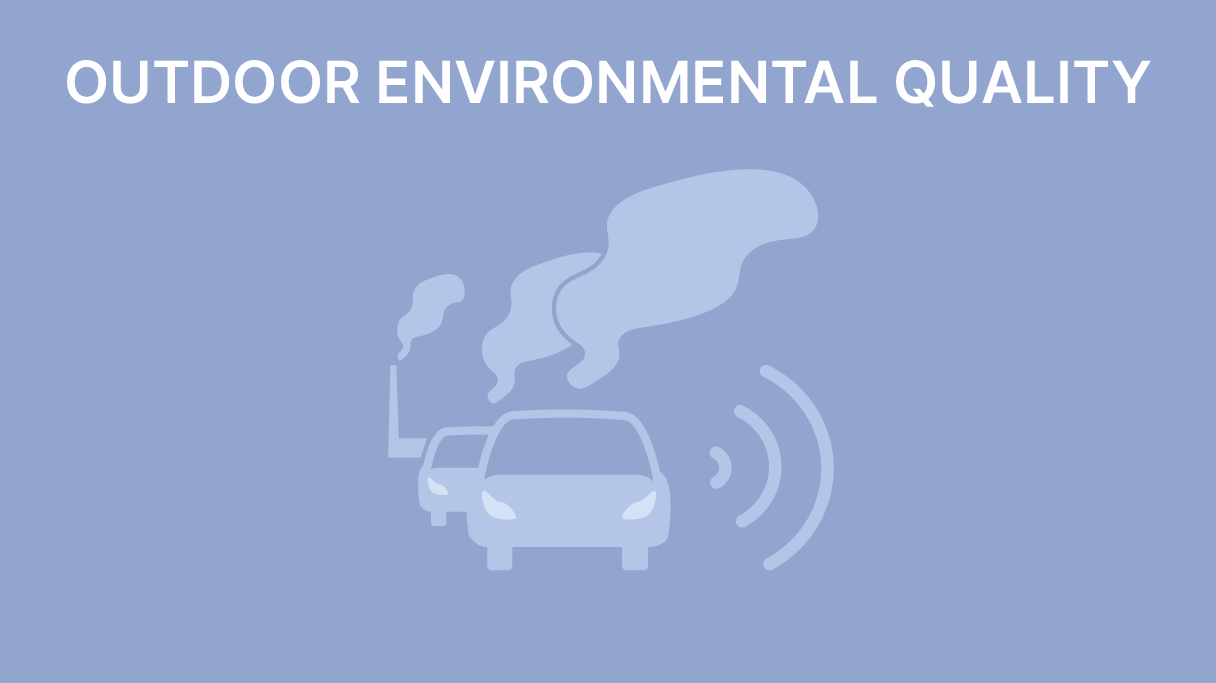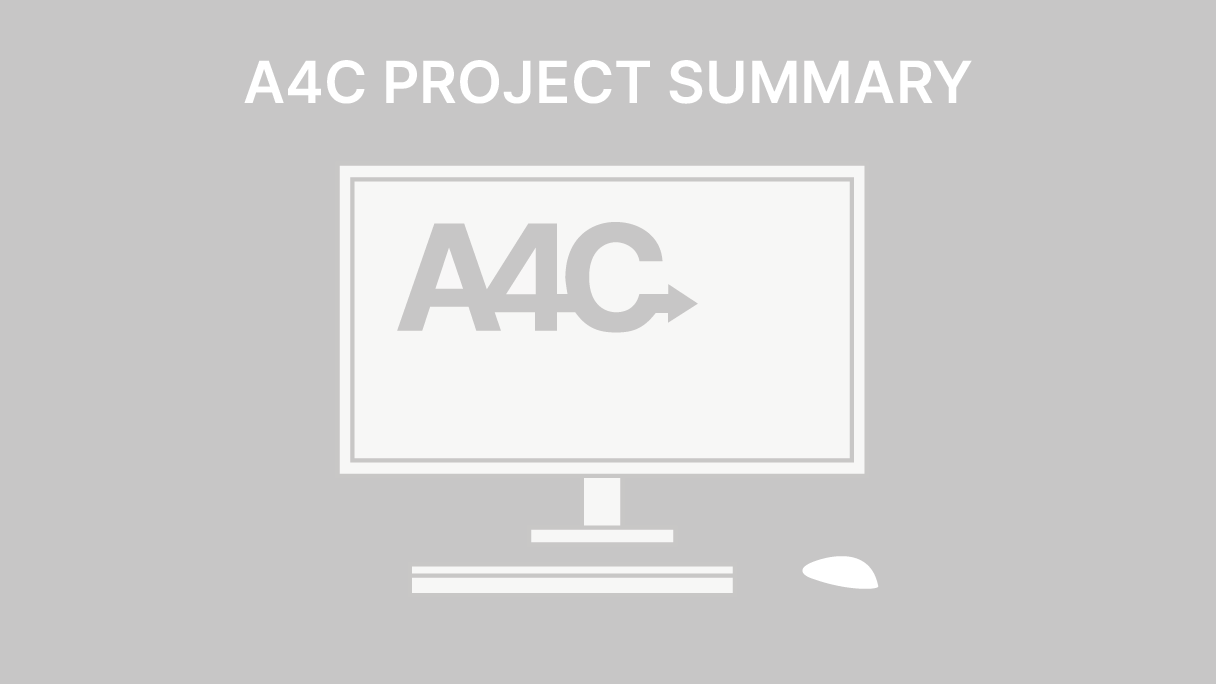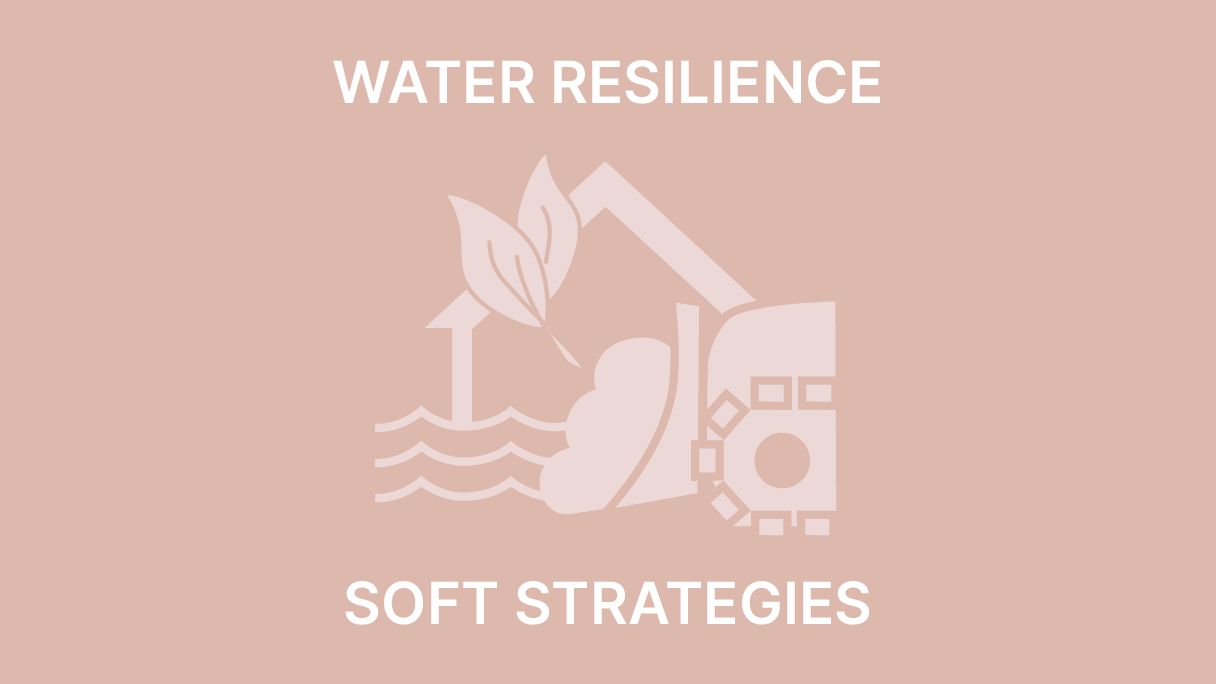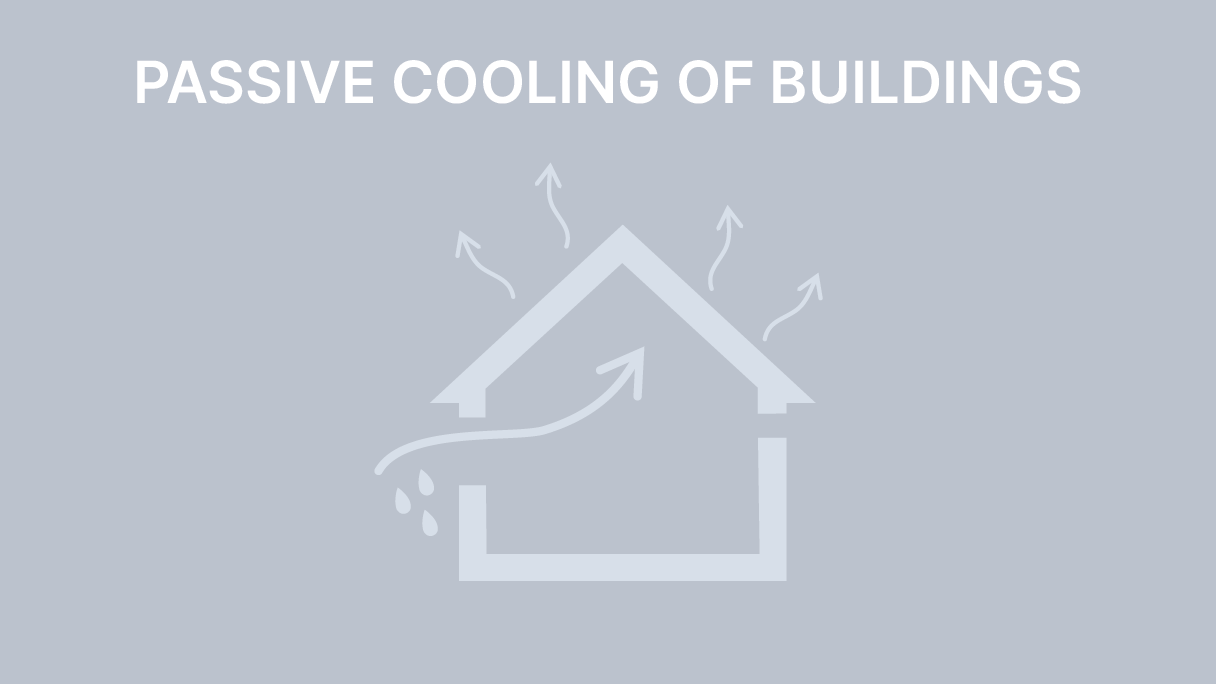Green, Grey & Brownfields
Carefully considering land-use and where to develop is a crucial aspect of a climate emergency design approach as it affects biodiversity, permeability of land, air pollution and accessibility and how much infrastructure is needed. Greenfields are essential for biodiversity and have little existing infrastructure and should be avoided for development as they often have better uses. Instead greyfields and brownfields can be restored because they have infrastructures and often existing buildings that can be reused. They are often contaminated so ecological site surveys and bio-remediation are crucial before development. Greyfield development often contributes to urban sprawl, where low density, residential only development ‘locks-in’ car reliance, leading to energy use, pollution alongside habitat loss and fragmentation. Instead you should create mixed-use neighbourhoods (e.g. 15 minute city principles), and strategies such as reuse and adapting existing structures, infill development, backyard filling, attic exchange and roof stacking to help densify cities while preserving green areas. Sustainable densities, walkable neighbourhoods, and shared resources can counteract the negative aspects of densification. For your site selection, ecological value (and protecting existing ecology) and future impact on the community, air, water, and soil should be assessed and key drivers in your site selection and your project design.
Climate Change
Globally, governments agreed to limit global heating to a maximum of 1.5°C rise but we are on track for 2.8°C global heating by 2100 because of insufficiently ambitious policy commitments (or not meeting them). But each fraction of a degree reduced, matters to reduce the severity of the impacts. The effects of climate change include hotter temperatures, the warming and acidification of the oceans, severe storms, increased drought, and a loss of species. Northern Europe is projected to face stronger winter warming, while Southern Europe will experience more severe summer warming. Urban areas face specific risks, with urban heat islands exacerbating extreme temperatures, impermeable ground surfaces increasing flood risk, and a loss of urban green space contributing to the degradation of land and biodiversity. To minimise the impact of climate change on the environment, actions should prioritise:
• protecting and enhancing ecosystems and biodiversity.
• careful land-use decisions that avoid destruction of forests, greenfields and other areas of biodiversity.
• rewilding cities and increasing green and blue infrastructures.
• ensuring a just transition.
All our actions should aim for the best climate future. Even if it is (still) legal to do less than that, we have a moral obligation and responsibility to do better.
Outdoor environmental quality
In the context of health and well-being, outdoor environment quality encompasses the design, planning, and management of exterior spaces and landscapes surrounding built structures. The goal is to create environments that optimise the physical and mental health of individuals. This approach includes various factors such as green spaces, landscaping, air quality, access to nature, and outdoor amenities that enhance overall well-being. Ac-cess to well-designed outdoor spaces encourages physical health through opportunities for physical activity, relaxation, and a connection with nature. Green areas, parks, and recreational facilities promote exercise and leisure, contributing to a healthier lifestyle. Moreover, these outdoor spaces play a vital role in mental and emotional well-being by providing opportunities for stress reduction, relaxation, and social interaction, which ultimately lead to improved mental health and reduced feelings of isolation.
Understanding soil
Understanding Soil explores into the intricate composition and properties of soil, emphasising its significance in architecture. Soil, a complex blend of minerals, organic matter, water, and air, undergoes formation through rock weathering and organic material accumulation. The composition, influenced by factors like climate and topography, includes mineral particles and organic matter, determining soil texture, structure, and fertility. Physical properties such as texture, porosity, and permeability, along with chemical properties like pH and nutrient content, are crucial considerations.
Architectural concerns regarding soil encompass contamination risks, erosion, compaction, poor quality, settlement, and subsidence. Sustainable soil practices, remediation techniques, and innovative approaches like bioremediation, mycoremediation and phytoremediation are explored.
The talk underscores the role of soil in ecological restoration and brownfield redevelopment, presenting opportunities for architecture projects that integrate bioremediation for soil improvement and landscape revitalisation.
Climate Emergency Facts
This lecture gives a brief overview of the climate emergency and how we got here, how it relates to architecture and what a radical sustainable transition means. In 2022, the IPCC report stated that Architecture and planning is lagging behind all other sectors in climate action. Urgent action is needed before 2030 – the long lifespan of buildings / urban and land-use policies ‘lock in’ emissions and polluting development and behaviours for decades. Technology alone will not be enough: you need to go from exploitative values, mindsets and practices to new restorative values and be part of creating a new culture that rethinks what we do and the way we work. We have a collective responsibility to protect our planet and architecture - you are part of the solution, and no longer be part of the problem!
The Ugliness of Unsustainability
Here the ugliness of unsustainability is discussed and framed through the lens of a cognitive approach to beauty and how, in doing so, we cannot frame our architecture as beautiful when it is based on extractive and exploitative processes. After all, there is no life, no architecture, no ‘beauty’ in a 4C° world. Nothing less than a radical change of our values, culture and practices in architecture (and society) is required to avoid 4°C warming. It takes us outside our comfort zone because we need to change how we design spaces and places. But our architecture cannot be exploitative or permitted to transgress other’s rights (human and non-human). To do this, we as architects need new values and a new, restorative aesthetic that ‘de-centres’ ourselves as architects and centres the planet, other people, other communities and non-humans in our design process and decision-making.
The Built Environment & the Climate
This lecture unfolds more specifically the impact of the built environment on the climate and gives a brief overview of the most important international and EU policies, and voluntary actions and standards and obstacles to their implementation. Each building that is not transformed or constructed to high standards will ‘lock in’ high CO2 emissions for the next decades and will require expensive and disruptive low carbon retrofits in the near future. Hence you need to be ambitious and go beyond minimum regulatory standards to respond to the urgency of the climate crisis. We do not only need high standards in CO2 reductions, but similarly ambitious and high standards in all other aspects of sustainability, i.e. a holistic and restorative sustainable architecture approach. Carbon savings must be achieved for real, not just on paper. Post-occupancy evaluation (POE) and feedback processes are crucial.
How to use the 10 themes
There are 10 climate emergency design themes around which the ARCH4CHANGE content is structured. These 10 themes reflect the different aspects to be considered in holistic sustainable architecture approaches. In practice, all of these themes must be met to high standards to create truly sustainable architecture in reality. However, as a student you do not need to know all the 10 themes in-depth from year 1. Instead, future and global responsibility, environment and people and community themes should always be included in each design project in each year of study. Each year, each student then works progressively towards including additional themes until all ten are included in your design project by the end of the studies
5-step Design Process
The 5 step iterative process and 10 climate emergency design themes will help you in the design-decision making process and in justification of your approach. To centre sustainability at the start of your project and refine it throughout you need to undertake integrated design and iterative design processes. Exploring your project’s context helps to make design decisions based on knowledge (Step 1) and helps to define project values and your climate emergency design approach (Step 2). This then sets a good foundation for imagining and testing (Steps 3, 4), and refining your architecture approach based on feedback loops (Step 5). Make sure you communicate your values and climate emergency design approach clearly and explicitly – this helps in the testing and feedback phase
Green Infrastructure
Green infrastructure is the network of natural green spaces and landscapes within and around urban environments, such as food-growing areas, wetlands, forests, parks and wildlife gardens. Green infrastructure supports biodiversity, enhances ecosystem health, absorbs CO2 and manages adaptations to a changing climate (e.g. flood prevention and overheating). Co-benefits are supporting social activity and human well-being. Your project must tread lightly: after all, placing a new structure is hugely disruptive, as the developed land will have lost its existing ecological value forever. Your choice of site is therefore vital and value and protect existing natural habitats and leave the place better than it was before (i.e. retorative action). To do that, create a green infrastructure plan for your project that identifies and creates a map of the potential impact of your design on existing green infrastructure and on stakeholders and propose remedial measures to ensure a restorative approach. Distribute green spaces of different scales and diversity throughout the city within short walking distances and connect wildlife habitats through parks with green corridors and pedestrian spaces. Prioritise views of nature and trees, integrating generous physical access to different kinds and scales of nature for human and non-humans.
Blue Infrastructure
Description Blue infrastructures are natural and human-made water systems at different scales. Integrating blue infrastructure at different scales in your project has multiple benefits, for example for biodiversity, the urban micro climate, reduced water consumption, and they can act as social infrastructure and for climate adaptation. Working with water rather than against it can lead to restorative actions (e.g. by giving water space; recharging the ground water through permeable paving; enabling the thriving of other species).
In your project:
• Map natural and human-made water bodies and understand how your site is affected by water as a threat or an opportunity (e.g., rivers, sea) now and in the future.
• Use permeable landscape surfaces, include space for water retention systems that are also dual-purpose, i.e., spaces for leisure to act as social infrastructure and space for enhancing biodiversity (restorative actions) and that can store water in extreme weather events as part of climate change adaptation.
• To mitigate climate change at micro-scale, always consider efficient appliances as a priority. Then consider water recycling strategies that are low in energy use and embodied energy, e.g. simple rain water harvesting techniques.
Finally, sustainable urban drainage systems (SUDs) need to be combined at all scales: they all act together to mitigate and adapt to climate change and tackle the biodiversity crisis.
Planetary Health
Your project should never contribute to tipping points and ecological or climate breakdown. Instead, use your design to identify how you can positively impact the planet and restore some of the previous damage done. This means redirecting current human-centric design approaches towards an inclusive, biodiverse, restorative future using the principles of radical inclusivity, biophilia and topophilia. We should strive towards an approachable architecture that can be used by different living-beings in different (adaptable) ways. Following these principles steers us towards more ethical professional practices that support planetary health, instead of damaging it.
Regenerative Design Approaches
Distinct from sustainable design, regenerative architecture reverses ecological damage and seeks a net-positive environmental impact. Transitioning from sustainability to regeneration, architects question how to not only use limited resources but also restore them. This approach fosters resilience to natural challenges, providing a progressive solution to the climate and biodiversity crisis.
The regenerative design process employs systemic thinking and involves integrating the natural world as both the inspiration and generator for architectural designs. It encompasses two essential aspects: minimizing environmental impacts through conscious material choices, reduced energy consumption, and intelligent design; and treating the environment as an equal partner in the architectural process. By understanding natural and living systems deeply, regenerative architecture embraces millions of years of evolution and engineering, creating structures that harmoniously coexist with their surroundings.
By embracing regenerative architecture, the construction industry can shift from minimizing harm to actively benefiting the environment, aligning design with nature's principles and promoting a more sustainable, prosperous future.
Water Resilience: Soft Strategies
Three key soft strategies for flood management include living shorelines, dunes and beach nourishment, and floating wetlands. Soft strategies emphasize enables effective flood management through holistic, nature-based solutions to mitigate flooding risks. They are gaining popularity due to their restorative nature, and are often paired with hard strategies for hybrid solutions. These strategies provide habitat for biodiversity and can serve as recreational spaces, although human disruption remains a concern.
Living shorelines are inclined natural banks with vegetation and natural materials that lessen wave impact, best suited for moderate flooding when combined with levees.
Dunes act as natural barriers, but proper vegetation is essential for stability. Armored dunes can enhance protection but need careful design.
Beach nourishment widens beaches, reducing erosion and storm surge impact, although its effectiveness varies. Designing these strategies involves protecting vegetation, creating paths, and setting back development.
Floating wetlands, made of buoyant materials, are adaptable and best for sheltered waters. They rise with floodwaters, filter pollutants, and provide wildlife habitat.
Challenges for soft strategies include extreme weather limitations, maintenance costs, and technical expertise. Opportunities lie in ecological benefits, affordability, community involvement, and environmental enhancement.
Health of Non-humans
Your project should never contribute to tipping points and ecological or climate breakdown. Instead, use your design to identify how you can positively impact the planet and restore some of the previous damage done. This means redirecting current human-centric design approaches towards an inclusive, biodiverse, restorative future using the principles of radical inclusivity, biophilia and topophilia. We should strive towards an approachable architecture that can be used by different living-beings in different (adaptable) ways. Following these principles steers us towards more ethical professional practices that support planetary health, instead of damaging it.
Future Generations
Designing for vague ‘future generations’ mainly focuses on the use of resources and the environmental impact of our actions and does not clarify who we design for today, in the present, nor who will be impacted in the future. In your project, you need to unfold why you design and who for. This includes: the local user, the public, the non-human and nature but also a global responsibility towards people, non-humans and nature further away, and ultimately our planet. We introduce the concept of ‘care’ which recognises and embraces our (inter)dependence, connection and responsibility towards others at its heart, including the non-human. This profoundly challenges the (modernist) ideal of an independent, visionary architect who only designs for themselves. But without this care, empathy and solidarity towards the user we cannot have truly sustainable architecture.
Passive Cooling of Buildings
You must always prioritise passive cooling strategies before considering active cooling. Key passive cooling strategies that you should include in your project at the building scale:
• Ensure all sources of overheating are tackled first and risks minimised.
• Green and blue infrastructure at different scales.
• Social infrastructure and provision of ‘cool zones’.
• Reducing internal heat gains and understanding occupant behaviour.
• Building design that reduces the need for cooling through greenery, efficient fabric, reflective surfaces, solar shading, purge ventilation, self-shaded built form and courtyards, thermal mass and careful window design.
Ensure climate justice as part of any passive and active cooling approach: everyone has the right to access cool spaces in summer.
Passive Cooling of Urban Areas
A ‘cool’ urban environment reduces the need for energy use to provide active cooling and ensures that buildings and spaces are at less risk of overheating. Key passive cooling strategies that you should include in your project at the urban scale are ensuring all sources of potential overheating are first minimised; the creation of extensive green, blue and social infrastructures at different scales, and working with knowledge about the prevailing wind to create urban environments that are comfortable year-round. In your project you should investigate the context and climate early on. and you need to radically 're-wild' our urban environment; this has many other co-benefits aside from summer cooling.


















